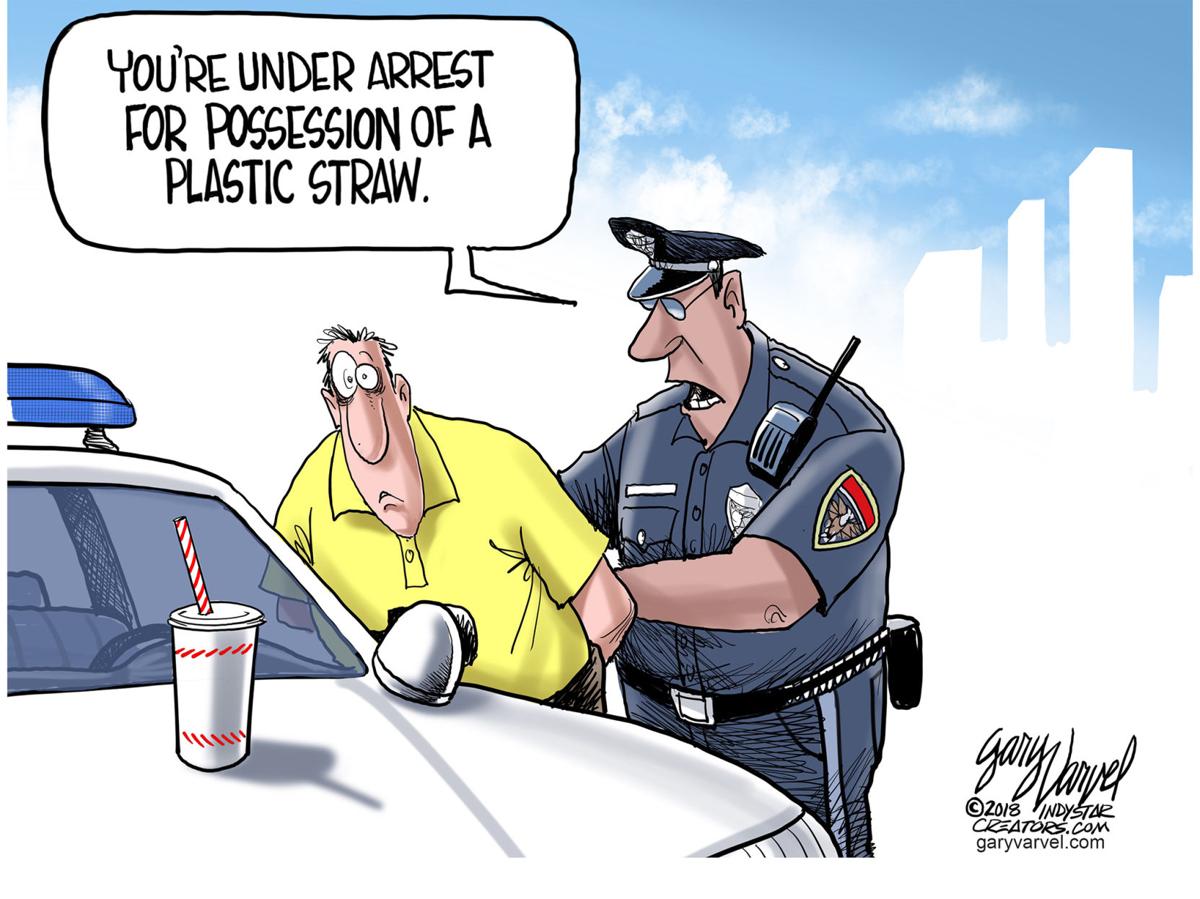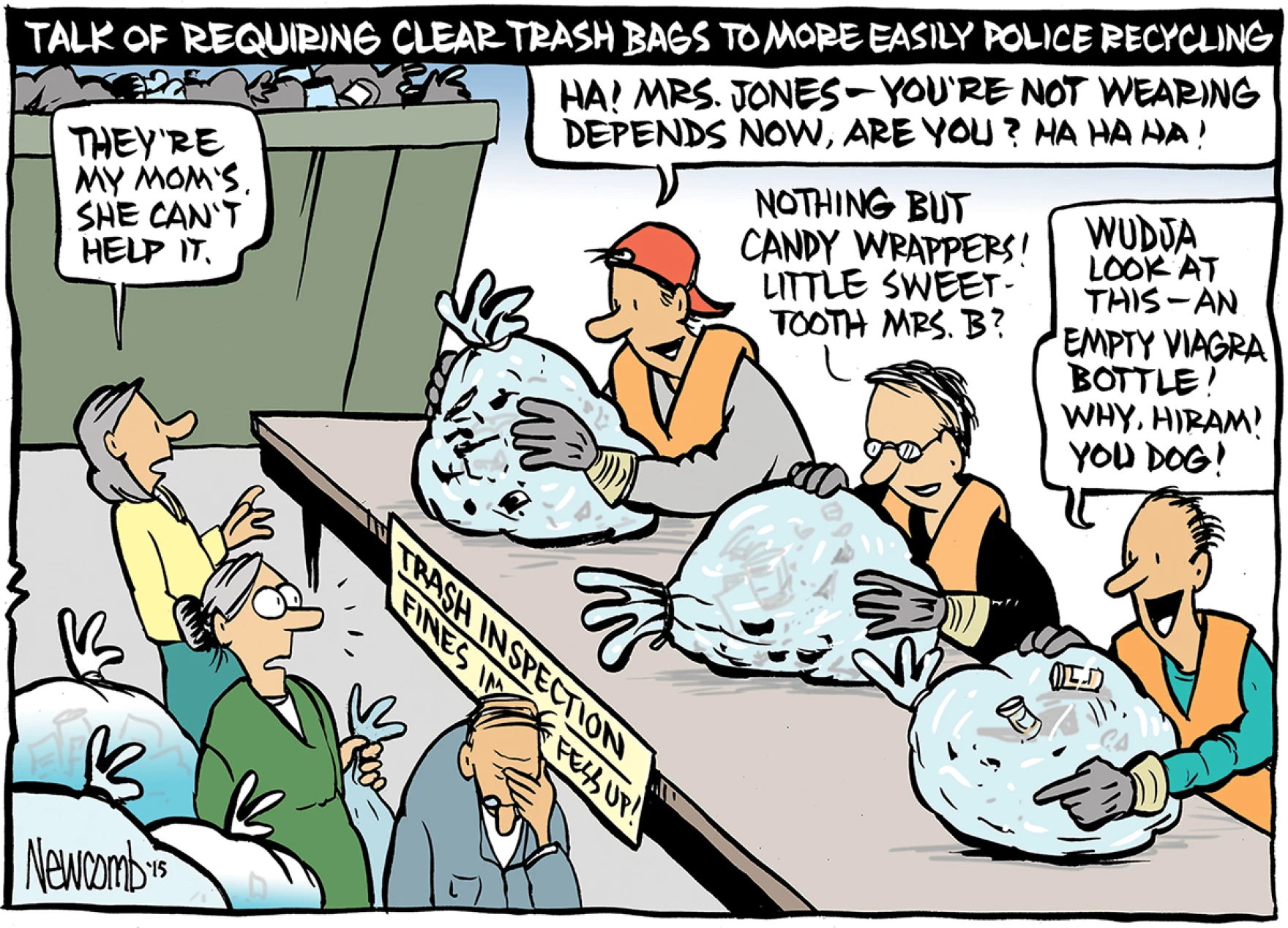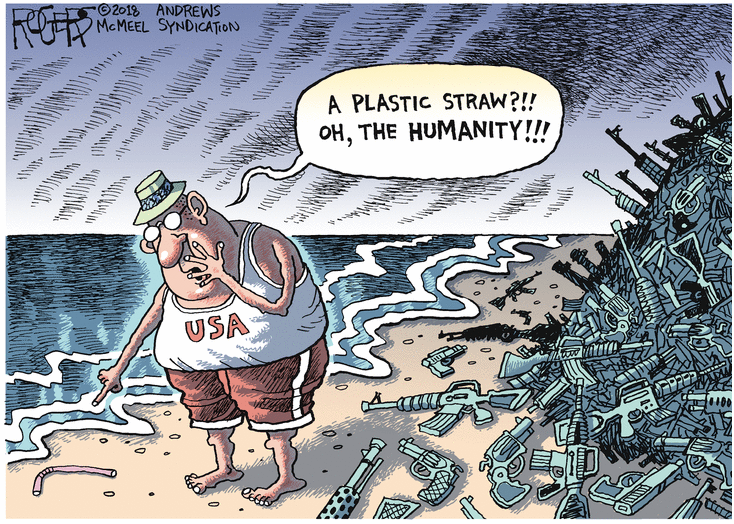
Following a viral video of a turtle with a straw in his nose, plastics suddenly went from the “greatest thing since sliced bread” to environmental villain. This post first summarizes the waste plastic problem discussed in a recent GWPF paper. As in other cases of environmental issues, plastic trash talking conflates several problems, including littering, waste recycling and plastics disposal. Secondly, we shall see that the obvious advantages of incineration are resisted out of (can you guess?) fear of global warming from CO2.
As reported in GWPF, Dr. Mikko Paunio of the University of Helsinki has warned that the UN’s decision to regulate waste plastic as hazardous and restrict exports will unleash a “surge of waste” on many EU countries. Paunio urges a rapid expansion of waste incineration capacity to stop the plastic waste problem turning into a public disaster. His paper is Saving the Oceans and the Plastic Recycling Crisis. Excerpts in italics with my bolds.
Executive Summary
The United Nations has just decided to add mixed and contaminated plastic waste to the schedule of materials that are regulated under the Basel Convention. This decision will have major implications.
Firstly, it represents a major victory for the environment because it will effectively prevent a large proportion of exports of plastic waste to developing countries. Much of this material ends up in the oceans, so the UN decision does away with a major contribution to the problem of marine waste.
However, it will also mean that the problem of what to do with plastic waste will return to countries that produce it. What is worse, the EU is putting in place stringent new rules on plastic recycling, which will only increase the size of the problem, as will its new rules on landfill.
As a result, EU countries will find themselves faced with a growing mountain of plastic waste, and with few means at their disposal to deal with it. The EU has previously been deeply opposed to incineration of waste because of green dogma: they believe that recycling is virtuous in its own right, as well as seeing it as part of the fight against climate change.
And even if they were to change their views, there could still be major problems because the incineration capacity available falls far short of what is required.
A rapid expansion of waste incineration capacity is urgently required to stop the plastic waste problem turning into a disaster.
The global waste crisis
The Campania (Naples 1990s) trash crisis is a clear warning to governments about the problems that can be caused by blindly following green ideology. Now, it has become clear that a much larger crisis, global in scale, may almost be upon us. The global plastics ‘recycling’ industry is already on the verge of meltdown as a result of China’s import ban. Not only the biggest plastic waste exporter – the European Union – but also the rest of the English-speaking world, Japan and even Brazil, a developing country, are now witnessing rapidly growing mountains of plastic waste. In all these countries, the people who have in good faith been sorting their plastic waste for recycling can quite rightly feel betrayed.
Wealthy countries have tried to deal with China’s import ban by exporting waste to countries like Bangladesh, Indonesia, Malaysia, the Philippines and Vietnam. However, waste management in these places is often primitive, and the result has been severe problems with marine pollution. So even though these imports bring much-needed revenue, the situation is becoming so bad that legislative barriers are being raised to prevent them.

One of the most important developments, which has received little international attention,
is the silent decision of hundreds of municipalities in the US to stop recycling solid waste altogether. These are not ‘Trumpian’ decisions, but decisions made by both Democrats and Republican administrations at local level across the country.
The EU’s confused position on incineration
So the EU’s policy response to the marine plastic waste problem has been to adopt policies that will do little to reduce plastic waste, and which will probably cause the problem to become worse. The example of the Campania crisis, which was only resolved by extensive use of incineration, is therefore likely to become important. Incineration is superior to all other waste management options in terms of climate change mitigation, because it avoids the complex and resource-hungry schemes involved in, for example, turning it into diesel fuel or converting it to some other product. Meanwhile, incineration directly reduces demand imports of coal used in large quantities to produce heat and electricity. Recycling is certainly worse on other fronts too, not least the fact that recycling plants release microplastics in their wastewater streams, while only delivering low-quality recycled material that cannot
be used in important applications like food packaging.
The Commission has argued in favour of incineration, but only very rarely. In a paper entitled, ‘A Clean Planet for All’, released before UNFCCC COP 25 in Katowice, it argued for a carbon-neutral economy fuelled by biomass, although it was reticent about explaining where this biomass should come from. The answer is found in an accompanying document, which explains that it will actually be waste that is burned, and suggests that waste incineration capacity should increase to 100 million tons in 2050.
However, mostly it has been strongly against the idea. For example, in reference to the Circular Economy proposal, it said that of the possible approaches to waste management, recycling was to be preferred, apparently on climate change mitigation grounds, although it presented no evidence to support this claim. It also said that reprocessing waste into fuels is not recycling, but is, like waste incineration, ‘material recovery’. As a result, it has declared that its new cohesion fund will not fund waste incineration plants.

Advantages of Burning Plastic
You will read in alarmist media about the dangers of incineration releasing chemicals such as hydrochloric acid, sulfur dioxide, dioxins, furans and heavy metals, as well as particulates. It is true that incomplete combustion of any hydrocarbon is to be avoided. But mainly detractors are using chemophobia against plastic incineration because of their obsession with CO2. Some common sense is provided by Flo-Bro The surprising benefits of burning plastics. Excerpt below with my bolds.
The plastic revolution
Whilst travelling, we’ve witnessed how several Asian countries such as Cambodia and Indonesia have turned into plastic junkyards. Inland and coastal areas are littered with a colourful mixture of bags, bottles, cups, trays and everything else, it is truly a sad and terrible sight. A lot of countries, not just in Asia, suffer from bad solid waste management. Moreover, littering seems to be a deep engrained cultural element. Whilst care for the environment seems to be on the last stage of people’s and the government’s interests, the nature is suffering and people too.

Reaction to Vermont proposal requiring clear plastic trash bags.
Owing to the favourable properties of plastic – strength, durability and light weight, we embraced them in all areas of life. Plastics have created a revolution and improved the quality of life immensely, however, nowadays they seem to be one of greatest plagues of our planet. I can’t enumerate the number of times I came across an article talking about the great plastic vortex the size of Europe in the Pacific, and that the ocean will soon contain more plastic than fish.
The chemical elements of plastic
Most of the packaging plastics which pollute the environment are based on two to four chemical elements. Polystyrene, polyethylene and polypropylene are made of carbon and hydrogen, whilst PET (polyethylene terephthalate), used for bottles, contains also oxygen. Nylon, a polyamide, which is used to make fibres, also contains oxygen and nitrogen in its structure. These elements are essentially the same ones that fossil fuels are made of. This should be of no surprise, since plastics (long chain hydrocarbons) are also made of the same crude oil, as their “short chain” relatives- gasoline and diesel.
In other words: if burned well, plastics create the same products as wood and fossil fuels -> water and carbon dioxide

Recycle or burn plastics?
In conventional terms, it is environmentally more sound to recycle plastics than dispose them. This approach, however, has so far proven quite challenging and more frequently results in “downcycling”. But even downcycling requires large centralised facilities with advanced sorting lines and plastic recovery processes, which is very expensive and not applicable to solve the pollution problem.
So, you were always told that burning plastics is bad for the environment. Indeed, incomplete combustion of any hydrocarbon creates noxious smoke. As the above image depicts, burning plastics can create the same products as fossil fuel and wood. In waste incineration facilities, thousands of tons of plastic burn worldwide daily, generating heat and electricity.
Burning any material well and without smoke and noxious fumes needs a high temperature and plenty of oxygen. This is best achieved in a stove, where the heat is concentrated and can be put to good use.
As with most solutions, this one is not free of flaws. Plastics such as PVC (polyvinyl chloride), which is used for plumbing, can create more dangerous products of decomposition – such as corrosive HCl gas; and several plastics. Usually the hard plastic used in motorbikes and cars contain flame retarders, which are too not the friendliest chemicals and may create toxic fumes when burned. Based on what I’ve seen, these plastics are a minority and PVC and hard plastics are denser than water and will sink If they end up in the sea. What you see washed up on the shore are light packaging materials and foams.
Conclusion
Plastic pollution is unfriendly to animals and is undoubtedly aesthetically damaging the environment. Burning them might be the best way to quickly improve the situation. If people recognize the benefit of burning plastics in the right stove, it will save them money on fossil fuels, stop plastic pollution, limit deforestation, and improve the quality of life. Combustion of low value packaging plastics is not a totally new idea and a company has already received an award for it.

See also Fighting Plasticphobia

I work in this area, and combustion is not the only answer. There are several companies developing true physical and chemical recycling solutions. In some the polymers are broken down into smaller molecules that can be used to improve the properties of building or packaging materials. See GreenMantra, for example.
LikeLike
Thanks big guy. Improving recycling usefulness would be desirable. I assume from your comment that the plastic would be reused in some form, not bio-degradable, which I think is the wrong way to go.
LikeLike